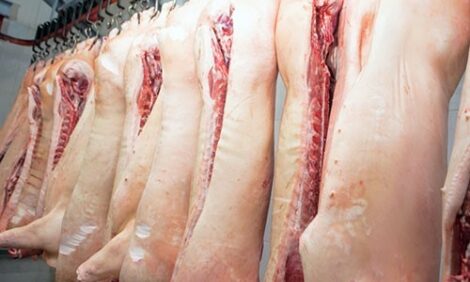



Diet Formulation According to Nutrient Requirements Cuts Costs and Maximizes Productivity
CANADA - An associate professor with the University of Manitoba's Department of Animal Science says, by better matching diets to the nutritional needs of the animal, swine producers can cut costs while maximizing productivity, writes Bruce Cochrane.When raising a pig to market weight, feed can represent 60 percent or more of the production cost.
U of M Associate professor Dr. Jim House says, by formulating rations according to stage of growth, producers can avoid any excess or any under feeding of nutrients.
Dr. Jim House-University of Manitoba
In a perfect world it would be ideal if everything that we fed to the animal was 100 percent utilized and that's not actually possible with the products that we have available to us in a cost effective manner.
Certainly we can get closer and, if you're looking at the amount of nutrients that are utilized, they can range anywhere from 30 to 50 percent of it being available, ultimately retained by the animal as it's growing and used for productive purposes.
Where we can get better efficiency is if we more closely meet the requirements of the animal and use a combination of ingredients and have a better understanding of the factors that influence the availability of nutrients within a given feedstuff so that we can manufacture or formulate diets that better meet those requirements.
When you really break it down, the key nutrients that we're focused on are energy and protein or more specifically the amino acids that are present in the ration.
Now you also have to keep in mind the minerals and of particular concern are calcium and also phosphorus because they go for proper bone structure and development and then the trace elements and the vitamins that help to round out the package of nutrients that animals require.
Dr. House says closely matching the diet to the requirements of the pig makes sense not only from a cost standpoint but also from an environmental standpoint.








